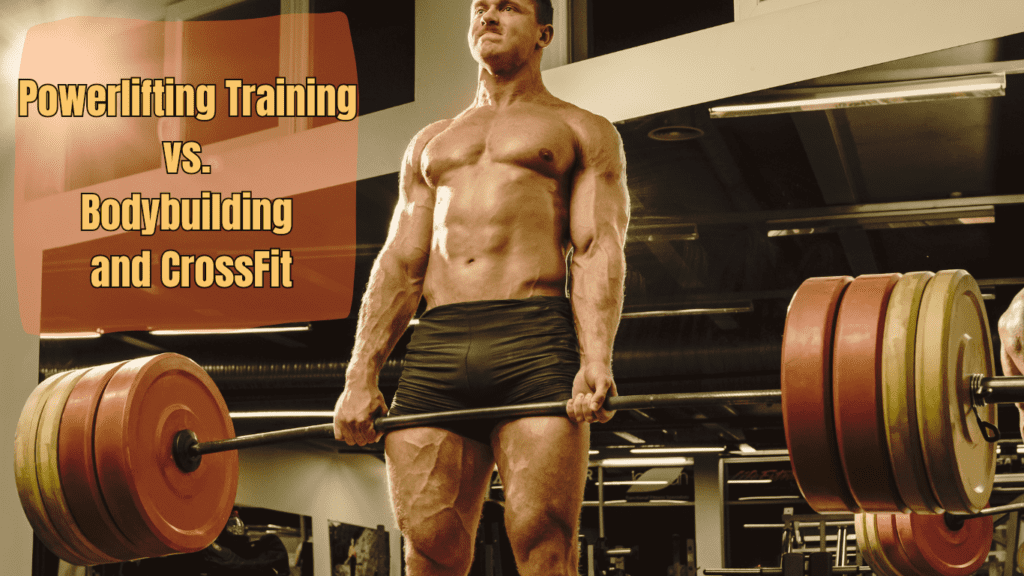Why Simple Workout Routines at Home Are the Perfect Solution
In this article, we will explore how simple workout routines at home can transform your fitness journey by providing effective, flexible, and achievable methods to reach your goals.
Did you know that over 60% of people prefer to work out at home due to convenience and flexibility? In today’s fast-paced world, finding time to visit the gym or attend fitness classes can be a challenge. However, a well-structured simple workout routine at home can help you stay fit and achieve your fitness goals without stepping outside your door. Whether you’re a beginner or looking to maintain your current fitness level, creating an effective workout plan tailored to your needs is essential.
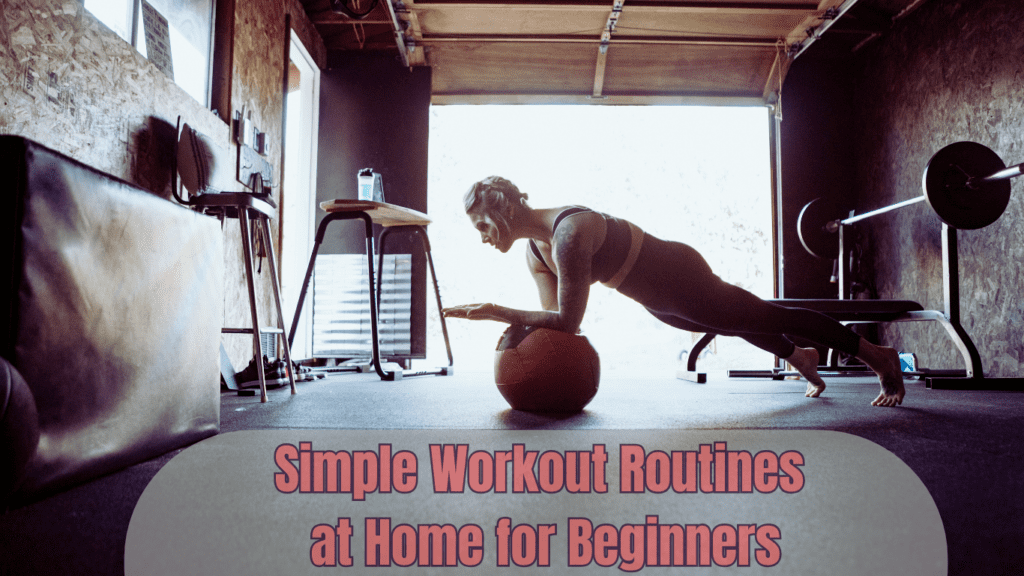
Purpose/Overview
Simple, science-based workout routines at home are effective because they are designed to meet various fitness needs while being easy to follow. These routines focus on compound movements that target multiple muscle groups, helping improve strength, endurance, and flexibility. Additionally, they offer flexibility in terms of time and space, making them perfect for individuals with busy schedules or limited access to fitness facilities.
By incorporating a mix of bodyweight exercises, resistance training, and mindful movement, simple workout routines at home can cater to different fitness levels—from beginners to those looking for a more advanced challenge.
What Readers Will Learn
In this article, readers will learn how to create a personalized simple workout routine at home that fits their fitness goals. We’ll discuss effective exercises, how to modify them according to fitness level, and tips for staying consistent with your home fitness journey. Whether your aim is weight loss, muscle building, or overall health, these routines will provide the tools needed to succeed.
Subscribe And Get Our Free E-Book:Unlocking The Power Of Nutrition-Supplements, Substitutes, and Superfoods!
Key Benefits of Simple Workout Routines at Home
- Convenience: No need to commute or wait for equipment.
- Cost-effective: Save money by working out at home with minimal equipment.
- Flexibility: Fit workouts into any schedule, regardless of time constraints.
- Accessibility: Suitable for all fitness levels, making it easy to adapt to individual needs.
By understanding the fundamentals of a simple workout routine at home, you’ll be well-equipped to create a plan that keeps you motivated and progressing toward your goals.
The Importance of Simple Workout Routines at Home
In today’s fitness world, many people feel overwhelmed by complicated workout routines that require advanced equipment, long sessions, and extensive knowledge. However, simplicity is often the key to long-term success. Simple workout routines at home have become increasingly popular for a variety of reasons, and for good reason. By focusing on basic movements and minimal equipment, these routines are not only effective but also sustainable for people of all fitness levels.
Why Simple Workouts Work
Simple workout routines at home provide a straightforward approach to fitness. Unlike complex routines that may require hours of preparation and specialized gear, these minimalist workouts focus on essential movements that deliver results. They emphasize consistency, flexibility, and efficiency, which are crucial components for achieving fitness goals without unnecessary complications.
One of the biggest myths surrounding fitness is that more complex routines yield better results. While advanced programs may work for elite athletes or those training for specific sports, the average person benefits from focusing on foundational exercises. These foundational movements engage multiple muscle groups simultaneously, promoting balance, strength, and overall physical fitness.
Simple workouts at home eliminate the need for extensive equipment, fancy exercises, or multiple variations of the same movement. Instead, they rely on a few key exercises that target core muscle groups effectively. Whether your goal is muscle building, fat loss, or maintaining overall health, these minimalist routines simplify the process while delivering real results.
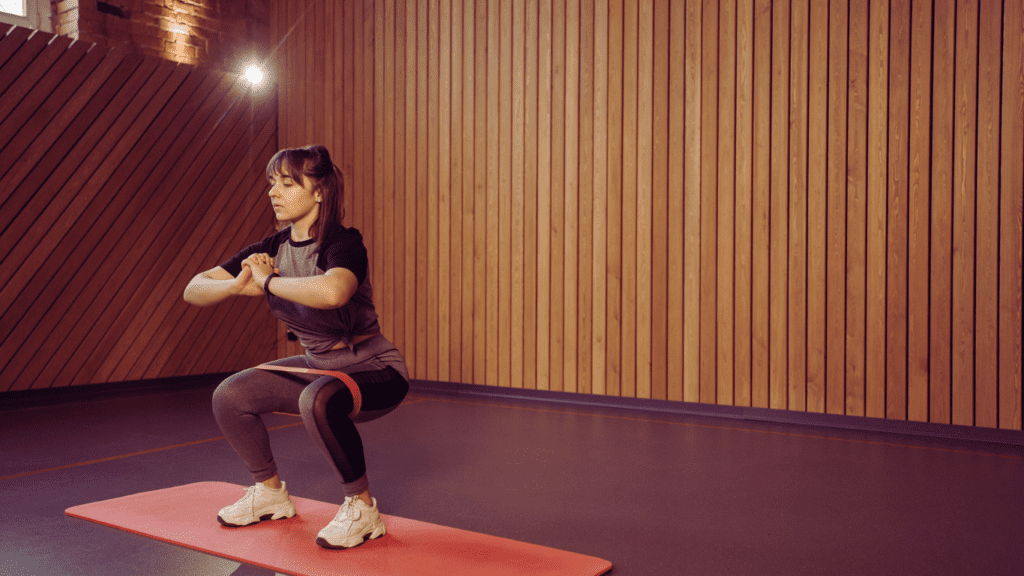
Benefits of Simple, Minimalist Routines
- Consistency: Minimalist routines are easier to follow and stick to, as they don’t require excessive planning or time.
- Efficiency: By focusing on compound movements, these routines maximize muscle engagement in a shorter period.
- Accessibility: Simple workout routines at home are perfect for those with limited space or equipment, making fitness more achievable.
- Flexibility: You can easily modify or adapt these routines based on your fitness level or specific goals.
One of the main reasons why people abandon their fitness routines is because they become too complex or overwhelming. With a minimalist approach, you reduce the chance of burnout or loss of motivation, making it easier to remain dedicated to your fitness journey.
Debunking Complex Routine Myths
Many believe that complex routines are necessary for achieving significant fitness progress. However, research shows that simpler workouts often yield better long-term results. Simple workout routines at home eliminate the unnecessary fluff and focus on what truly matters—effective movements that deliver real benefits.
Complicated programs often involve excessive variations of exercises, leading to inconsistent execution, injury risk, and lack of progress. Minimalist routines eliminate this issue by sticking to movements that are intuitive and safe, while still offering a full-body workout experience.
For example, exercises like bodyweight squats, push-ups, and planks are foundational movements that engage multiple muscle groups and enhance functional strength. When done consistently, they can lead to impressive gains in strength, endurance, and overall fitness without needing advanced equipment or hour-long sessions.
Creating Your Own Simple Routine
When creating a simple workout routine at home, focus on key movements that address your fitness goals. A well-rounded routine will include exercises that target different parts of the body:
- Upper body: Push-ups, pull-ups, shoulder presses
- Lower body: Bodyweight squats, lunges, glute bridges
- Core: Planks, Russian twists, bird-dogs
These foundational movements can be adjusted to suit your fitness level, ensuring progress while maintaining simplicity. By sticking to a balanced mix of strength, endurance, and mobility-focused exercises, you’ll build a solid foundation for long-term success.
In conclusion, simple workout routines at home are a practical, effective way to stay fit without unnecessary complexity. By focusing on essential movements and staying consistent, you’ll pave the way for sustainable progress in your fitness journey.
Home Workouts For Beginners -Full Fitness Routine Video
Adapting Simple Workout Routines at Home to Your Body Type
When it comes to achieving fitness success, knowing your goals and understanding your body type are essential. Whether you’re aiming for weight loss, muscle gain, strength, or endurance, simple workout routines at home can be tailored to suit your specific needs. By customizing your workouts based on your personal goals and body type, you can maximize results and make consistent progress.
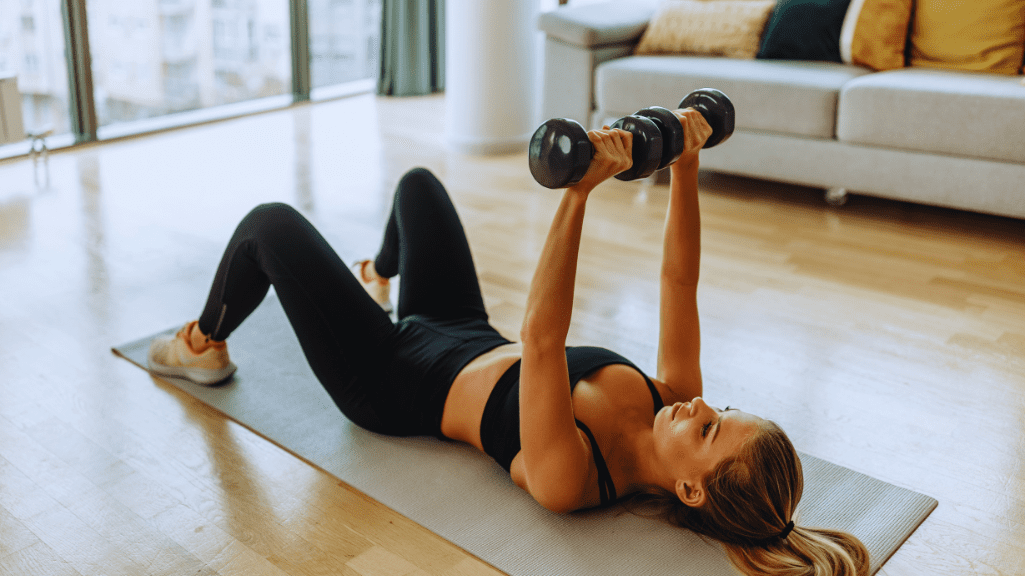
Assessing Your Fitness Goals
Before diving into a simple workout routine at home, it’s important to assess what you hope to achieve. Different fitness goals require distinct approaches to exercise, and understanding these differences can help guide your routine design.
- Weight Loss: If your primary goal is to shed excess body fat, your workouts should focus on a combination of cardiovascular exercises and strength training. This helps create a calorie deficit while building lean muscle.
- Muscle Gain: For those looking to build muscle, resistance training becomes the focal point. Compound movements like squats, deadlifts, and bench presses are essential to stimulate muscle hypertrophy.
- Strength: Strength-focused routines emphasize heavy lifting and lower repetitions. These workouts increase muscle strength, focusing on lifting heavier weights for fewer reps.
- Endurance: Endurance goals require higher repetition sets with moderate weights to build stamina and cardiovascular health. Activities like bodyweight exercises, running, or circuit training fall into this category.
Each fitness goal influences the structure of your routine, ensuring that the exercises align with your desired outcomes. For instance, simple workout routines at home for weight loss might include high-intensity interval training (HIIT) combined with bodyweight strength movements, whereas muscle gain routines would prioritize progressive overload.
Identifying Your Body Type
Your body type plays a significant role in how your body responds to exercise. Understanding your body type allows for a more tailored approach to simple workout routines at home. There are three primary body types: Ectomorph, Mesomorph, and Endomorph.
- Ectomorph: Typically characterized by a slim build, fast metabolism, and difficulty gaining muscle. Ectomorphs benefit from higher rep ranges with lower weights to build muscle and improve overall aesthetics.
- Mesomorph: This body type is naturally muscular with a balanced physique. Mesomorphs can easily build muscle and maintain low body fat. For them, a combination of strength and hypertrophy-based workouts works best.
- Endomorph: Endomorphs tend to carry more body fat, with a slower metabolism. They excel with workouts that focus on fat loss, strength training, and circuit-style routines to boost calorie burn.
By identifying your body type, you can adjust your simple workout routine at home to optimize results. For example, an Ectomorph may need more volume and lighter weights, whereas an Endomorph should focus on lower reps with moderate to heavier weights.
How Body Type Affects Fitness Goals
Each body type comes with distinct characteristics that affect muscle gain, fat loss, and recovery:
- Muscle Gain: Mesomorphs have an easier time gaining muscle compared to Ectomorphs and Endomorphs. However, Endomorphs can build muscle by using specific strength and resistance training techniques.
- Fat Loss: Ectomorphs and Mesomorphs may find fat loss easier due to their faster metabolisms. Endomorphs require a more structured approach with calorie deficits and higher intensity workouts to shed body fat effectively.
- Recovery: Mesomorphs tend to recover faster due to their balanced build, while Endomorphs may require more time and consistency in recovery-focused movements like stretching and mobility work.
Practical Tips for Modifying Workouts Based on Body Type
To get the most out of your simple workout routines at home, consider the following tips for each body type:
- Ectomorph: Increase volume, utilize supersets, and focus on isolation movements to target specific muscle groups. Include compound lifts but keep rep ranges higher with lower weights to avoid overtraining.
- Mesomorph: Incorporate a mix of compound lifts and hypertrophy work. Maintain a balance between heavy lifting and moderate volume for maximum results.
- Endomorph: Prioritize full-body workouts with a focus on strength training and high-intensity interval sessions. Minimize rest periods and add circuit training to maximize calorie burn.
By adapting your simple workout routines at home to your body type, you ensure that your workouts are both effective and sustainable. Customizing your approach allows you to focus on your unique needs, making progress more attainable in the long run.
In conclusion, understanding your goals and body type is essential when designing a simple workout routine at home. By tailoring your exercises to fit your specific needs, you can achieve better results while maintaining consistency in your fitness journey.
Elements of a Simple Workout Routine at Home
Creating a well-rounded simple workout routine at home requires a combination of key components that address both physical fitness and recovery. Whether you’re a beginner or looking to maintain your current fitness level, these essential elements ensure that your workouts are balanced and effective. By including the right mix of warm-ups, strength training, cardiovascular fitness, and cool-downs, you can maximize your results while minimizing the risk of injury.
Key Components of a Balanced Workout Routine
A simple yet effective workout routine at home is built on several foundational elements. Each component works together to create a comprehensive approach to fitness, ensuring you get the most out of your time and effort. Below are the essential elements you should include in your routine:
1. Warm-up
A proper warm-up is crucial for preparing your body for exercise and reducing the risk of injury. A dynamic warm-up incorporates movement-based stretches and mobility drills that gently activate muscles and joints. Some effective warm-up exercises include:
- Bodyweight squats
- Leg swings
- Arm circles
- High knees
These movements help improve blood flow, increase flexibility, and gradually elevate your heart rate, ensuring a smooth transition into more intense exercises.

2. Core Strength
Building core strength is vital for overall stability and functional movement. A strong core helps support your body during various workouts and daily activities. Incorporating core exercises into your simple workout routine at home enhances balance, posture, and injury prevention. Key exercises include:
- Planks
- Bridges
- Bicycle crunches
- Russian twists
Strengthening your core ensures that you have a solid foundation for all other exercises and activities.
3. Strength Training
Strength training is a cornerstone of any fitness routine. For a simple workout routine at home, you can focus on bodyweight exercises, free weights, and resistance bands. These exercises help build muscle, boost metabolism, and improve overall fitness. Common strength exercises include:
- Push-ups
- Bodyweight squats
- Lunges
- Dumbbell rows
- Resistance band chest presses
Including strength training in your routine will help you build lean muscle, which is essential for maintaining strength and flexibility.
4. Cardiovascular Fitness
Cardiovascular exercises improve heart health, endurance, and calorie burn. For a balanced simple workout routine at home, both interval training and steady-state cardio are beneficial. Whether you’re focusing on short bursts of high-intensity exercise or longer periods of moderate-paced movement, cardiovascular training supports overall fitness. Popular methods include:
- High-Intensity Interval Training (HIIT)
- Circuit training
- Cycling
- Walking or jogging
Including cardio exercises helps enhance endurance and promote fat loss, making them a crucial part of your routine.
5. Cool-down
Cooling down is just as important as warming up. It allows your body to gradually transition back to a resting state, reducing muscle soreness and promoting recovery. A cool-down routine typically includes static stretching and mobility exercises. Common cool-down exercises are:
- Static stretching (hamstring stretches, quad stretches)
- Foam rolling
- Gentle yoga movements
By dedicating time to cool down, you facilitate better recovery, which helps prevent injury and improves performance in your next workout session.
Creating a Balanced Routine
When designing a simple workout routine at home, it’s essential to strike a balance between all of these components. For instance, a typical session might begin with a dynamic warm-up, followed by strength exercises, then cardiovascular training, and finally ending with a thorough cool-down. This structure allows for a comprehensive, well-rounded workout that meets your fitness needs.
Including all of these elements not only optimizes physical performance but also ensures long-term sustainability. Consistency in your routine is key—whether you’re aiming to improve overall fitness, increase strength, or lose weight, integrating each component in a balanced way will bring the best results.
In conclusion, a simple workout routine at home incorporates key elements such as warm-ups, core strength, strength training, cardiovascular fitness, and cool-downs. These components work together to provide a well-rounded approach to fitness, promoting both performance and recovery.
Building Your Simple Workout Routine at Home
Creating a simple workout routine at home is an accessible and effective way to stay fit without the need for a gym or expensive equipment. However, crafting a routine that fits your fitness level and goals requires thoughtful planning. By following a structured approach, you can ensure that your workouts are balanced, achievable, and tailored to your individual needs. Here’s a step-by-step guide to building a simple, yet effective workout routine at home.
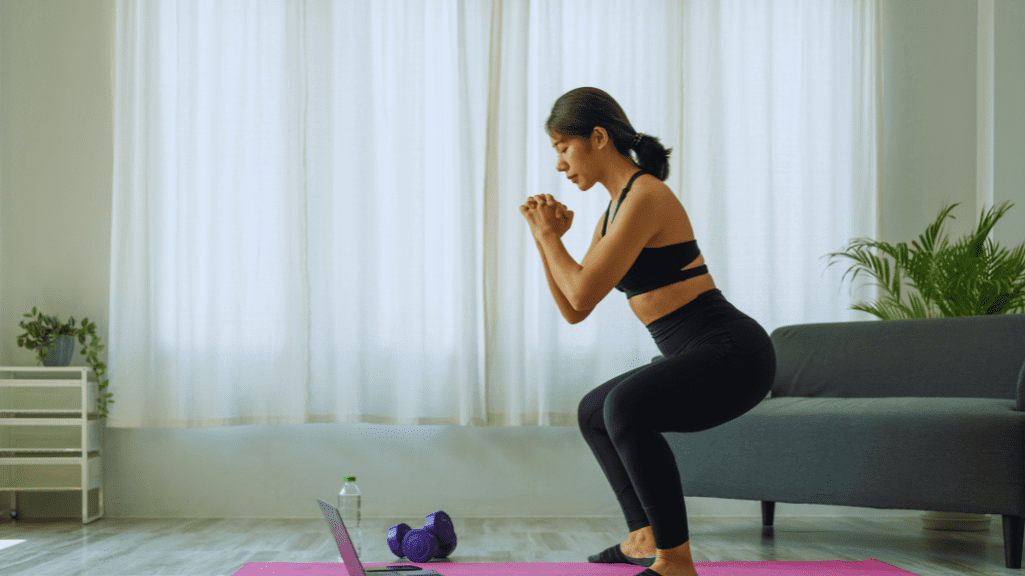
Step 1: Assess Your Fitness Level
Before diving into a simple workout routine at home, it’s important to assess your current fitness level. This helps in designing workouts that are appropriate for either beginners, intermediates, or advanced fitness enthusiasts. A simple self-assessment can guide you in determining which category you fall into:
- Beginner: Just starting out or returning after a long break from exercise.
- Intermediate: Has a basic understanding of exercise and fitness, with some experience in structured routines.
- Advanced: Regularly engages in challenging workouts and has a solid foundation of fitness.
For instance, a beginner may benefit from focusing on bodyweight exercises and lower-intensity cardiovascular activities, while an advanced individual could incorporate heavier weights and high-intensity interval training (HIIT). A simple way to assess your level is to track how you feel during and after workouts—if you’re struggling with form or feeling extreme fatigue, it might indicate a need to adjust intensity.
Step 2: Choose Your Focus (Goal-Specific Routine)
Once you have assessed your fitness level, the next step is to choose a focus that aligns with your goals. A simple workout routine at home can cater to a variety of objectives, such as weight loss, muscle gain, or general fitness. Here’s how you can structure a routine based on your specific goals:
- For Weight Loss: HIIT (High-Intensity Interval Training), circuit training, and fat-burning exercises are ideal for burning calories and boosting metabolism. This combination ensures that you stay in a calorie deficit, promoting fat loss.
- For Muscle Gain: Focus on resistance-based movements using bodyweight or free weights with higher repetitions and shorter rest periods. This method increases muscle hypertrophy over time.
- For General Fitness: A balanced mix of strength, cardio, and mobility work will help maintain overall fitness while enhancing flexibility and endurance.
For each goal, the structure of the simple workout routine at home can be tailored to include exercises that maximize efficiency and progress.
Step 3: Frequency and Duration
The frequency and duration of your workouts play a significant role in achieving your fitness goals. A simple, effective workout routine at home balances the right amount of exercise with recovery to prevent burnout and injury.
- Frequency: Most individuals see the best results with 3 to 5 workout sessions per week. This allows for adequate recovery while maintaining consistent progress.
- Duration: Ideally, each workout should last between 30 to 60 minutes. Shorter sessions can be highly effective, especially if they incorporate high-intensity movements or circuit training.
For example, a beginner’s routine might consist of three 30-minute sessions per week, focusing primarily on bodyweight exercises, while an advanced routine could be spread across five 45- to 60-minute sessions, incorporating strength and cardio intervals.
Step 4: Exercise Selection
Once you’ve determined your fitness level, chosen your focus, and set your frequency and duration, the next step is selecting the right exercises for your simple workout routine at home. Below are examples of exercises that can be incorporated into each key category:
Strength Training:
- Bodyweight Squats
- Push-ups
- Lunges
These exercises are foundational for building strength and muscle, using minimal equipment or no equipment at all.
Cardio:
- Jump Rope
- High-Intensity Intervals
- Steady-State Running
Cardio routines can be customized to fit your preferred style—whether it’s short, intense bursts or steady-paced sessions.
Flexibility and Mobility:
- Yoga Flows
- Dynamic Stretches
- Foam Rolling
Including flexibility and mobility exercises helps maintain joint health, improve recovery, and reduce injury risk.
Putting It All Together
A well-structured simple workout routine at home integrates strength, cardio, and flexibility to meet your fitness goals. By focusing on key components and tailoring them to your fitness level and objectives, you ensure that your workouts are effective and sustainable. Remember, consistency and proper recovery are crucial for long-term success. Whether your aim is fat loss, muscle gain, or general fitness, a balanced routine that includes strength training, cardiovascular fitness, and flexibility exercises will help you reach your full potential.
4o mini
Progress Tracking and Adaptation for Simple Workout Routines at Home
Tracking your progress and adapting your simple workout routines at home is essential to ensure consistent improvement and prevent stagnation. Whether you are a beginner or more experienced in fitness, monitoring your progress helps keep you motivated and ensures your workouts remain effective. Additionally, understanding when and how to adapt your routine ensures that you continue to challenge your body, avoid plateaus, and achieve your fitness goals.
Tracking Your Progress
Tracking your progress is a vital part of maintaining a successful simple workout routine at home. There are several methods available to monitor improvements, ranging from simple self-assessments to the use of advanced wearable devices. These methods provide valuable insights into how well you are performing and help guide future adjustments.
- Fitness Journals:
- Document exercises, sets, reps, and how you feel after each session.
- Helps identify patterns and improvements over time.
- Example: Starting with 10 push-ups and progressing to 15 demonstrates clear progress.
- Wearable Devices:
- Track real-time data such as heart rate, calories burned, steps taken, and sleep quality.
- Provides a more detailed view of physical activity and allows for precise measurements.
- Simple Self-Assessments:
- Measure body composition (weight, body fat percentage).
- Perform fitness tests such as timed plank holds or a mile run to track performance improvement.
Importance of Progression
Progression is key to making lasting gains in fitness. As your body adapts to regular exercise, you’ll need to consistently challenge it to keep progressing. This can be done by increasing reps, sets, or adding intensity to your workouts.
- Increasing Reps or Sets:
- Gradually add more repetitions to exercises or perform additional sets.
- For example, if you start with 10 bodyweight squats, aim to increase to 12, then 15, and so on.
- Adding Intensity:
- Introduce variations such as adding weights or adjusting tempo during exercises.
- Over time, this will help build strength and endurance.
Tracking progression ensures that your workouts remain effective, and consistently pushing yourself helps avoid plateaus in your fitness journey.
Adapting Your Routine
Adapting your routine is essential when you notice a plateau or when your fitness goals shift. A well-structured simple workout routine at home evolves with your progress, providing fresh challenges and avoiding burnout.
- When to Change Your Routine:
- Plateau: If you stop seeing progress, it’s time to reassess and modify your exercises or increase intensity.
- Fitness Goals: If your goals shift, such as moving from general fitness to muscle gain, your routine should reflect those changes.
- Adjusting Based on Body Feedback:
- Signs of Recovery: Listen to your body. If you feel excessively fatigued or experience discomfort, it may be time to scale back or adjust your routine.
- Signs of Burnout: Overtraining can lead to injury or loss of motivation. Ensure that you incorporate adequate rest days and recovery exercises like stretching or light mobility work.
By paying attention to these cues, you can make informed decisions on when and how to modify your simple workout routine at home for optimal results.
Maximizing Your Simple Workout Routine at Home
Creating a successful simple workout routine at home involves more than just following a structured plan. It also requires a well-organized environment and strategies to maintain consistency. Whether you’re starting with minimal equipment or juggling a busy schedule, these tips will help optimize your home workouts for better results.
Creating a Home Gym Setup
Setting up a home gym doesn’t have to be complicated or expensive. With just a few essential pieces of equipment, you can create an effective space for your simple workout routine at home. Here’s a guide on how to set it up:
- Minimal Equipment:
- Resistance Bands: Lightweight, portable, and versatile for strength and flexibility exercises.
- Dumbbells: Ideal for building strength, balance, and muscle.
- Yoga Mat: Provides comfort and a clean surface for floor exercises and stretching.
These simple pieces of equipment allow for a wide variety of exercises, from strength training to mobility work. If space is a concern, opt for adjustable dumbbells or compact resistance bands that can easily be stored when not in use.
- Maximizing Space:
- Utilize Corners: Fit a small mat or resistance band setup in a corner of a room to save space.
- Multipurpose Furniture: Use benches or chairs for additional exercises.
- Wall Storage: Hang resistance bands or yoga mats on hooks to keep your workout area clutter-free.
By organizing your space effectively, you’ll create a comfortable and convenient area to perform your simple workout routines at home.

Maintaining Consistency
Consistency is key when it comes to home workouts. Overcoming challenges like motivation dips, distractions, and a busy schedule can be difficult, but with the right strategies, you can maintain a steady fitness routine. Here’s how to stay on track:
- Set Clear Goals:
Define your fitness objectives to stay focused and motivated. Whether it’s building strength, improving endurance, or simply staying active, having specific goals helps guide your workouts. - Establish a Routine:
Create a set schedule for your simple workout routine at home. Consistency is important, so try to work out at the same times each week.- Example: Monday, Wednesday, and Friday at 7 PM.
- Limit Distractions:
Find a quiet space away from distractions such as phones, TV, or family noise. Create a designated workout area where you can focus solely on exercising. - Prioritize Recovery:
Rest is as important as your workouts. Schedule regular rest days to allow your body to recover. Stretching and foam rolling can also help reduce soreness and speed up recovery. - Stay Flexible:
Life can be unpredictable, so if your schedule changes, adapt your routine to fit the new timeline. A 20-minute quick session is better than skipping a workout entirely.
Overcoming Motivation Dips
Motivation can fluctuate, especially when working out alone at home. It’s normal to face periods where staying motivated feels challenging, but with some simple strategies, you can push through:
- Visual Reminders:
Place motivational quotes or progress charts in your workout space to keep you inspired. Seeing your progress visually can boost your motivation. - Mix Up Your Routine:
Doing the same exercises repeatedly can lead to boredom. Incorporate new exercises or change your routine every few weeks to keep things exciting and effective. - Accountability Partners:
Even if you work out alone, connecting with a friend or joining online communities can provide support and encouragement. Sharing progress and challenges keeps you motivated.
By addressing dips in motivation, you’ll maintain the consistency needed for effective simple workout routines at home.
A successful simple workout routine at home is built on a strong foundation—minimal yet effective equipment, a well-organized space, and strategies to maintain consistency. Whether you’re setting up a compact gym or navigating through a busy schedule, these tips will guide you toward achieving your fitness goals. Stay committed, stay flexible, and make the most of your home workouts!
Top 5 Simple Workout Routines at Home for Beginners Trends Chart:
| Trend | Description | Benefits | Tips for Implementation | Notable Resources | Potential Challenges |
|---|---|---|---|---|---|
| 1. Virtual Fitness Classes | Embrace the convenience of live-streamed or pre-recorded fitness classes, offering variety and expert guidance from the comfort of home. | Access to expert-led classes anytime, anywhere, eliminates barriers to entry and offers a sense of community in solitary workouts. | Schedule sessions in advance to stay consistent, experiment with different instructors/styles for variety, and ensure a stable internet connection. | YouTube, Peloton Digital, Daily Burn | Technical glitches, distractions at home, lack of personalization |
| 2. Wearable Fitness Tech | Integrate wearable devices like smartwatches or fitness trackers to monitor progress, set goals, and stay motivated throughout your fitness journey. | Real-time data and personalized insights empower users to optimize performance and track progress with precision. | Set achievable goals based on data insights, use reminders/alerts for consistency, and leverage social features for accountability. | Fitbit, Apple Watch, Garmin | Cost, learning curve, dependence on technology |
| 3. Functional Fitness | Focus on movements that mimic real-life activities, enhancing overall strength, mobility, and agility for improved daily functionality. | Practical exercises enhance overall functionality, translating fitness gains into everyday activities and reducing injury risk. | Incorporate multi-planar movements (e.g., lunges, squats), prioritize form over intensity, and gradually increase resistance for progression. | TRX Suspension Trainer, Kettlebells, Medicine Balls | Requires proper instruction to avoid injury, may not initially feel as intense as traditional workouts |
| 4. Bodyweight Training | Utilize your body’s weight as resistance for effective strength training, requiring minimal equipment and adaptable to various fitness levels. | Versatile and accessible, bodyweight exercises cater to beginners while offering scalability for advanced fitness enthusiasts. | Focus on mastering fundamental movements (e.g., push-ups, squats), experiment with tempo and variations, and track progress over time. | Calisthenics app, Convict Conditioning book series, YouTube tutorials | Plateauing without progression, limited resistance options, potential joint strain for overweight individuals |
| 5. Online Fitness Communities | Engage with like-minded individuals through online forums, social media groups, or virtual challenges, fostering accountability and support in your fitness endeavors. | Peer support and shared experiences foster motivation, accountability, and a sense of belonging, crucial for long-term adherence. | Participate actively in discussions, share goals and progress updates, and seek advice or encouragement when facing obstacles. | Reddit communities (e.g., r/fitness, r/bodyweightfitness), Facebook groups, Strava challenges | Lack of in-person interaction, misinformation, potential for comparison or competition anxiety |
Insights:
- Virtual Fitness Classes: Scheduling and stable internet are crucial for consistent participation, while variety and community foster engagement.
- Wearable Fitness Tech: Data-driven insights empower users to set and achieve goals, but reliance on technology and cost may pose challenges.
- Functional Fitness: Emphasizing practical movements enhances overall functionality, though proper form and instruction are vital for safety.
- Bodyweight Training: Versatility and scalability make bodyweight exercises accessible, but progression and variation are key to continued improvement.
- Online Fitness Communities: Peer support and shared experiences offer motivation and accountability, but users must actively engage and navigate potential pitfalls.
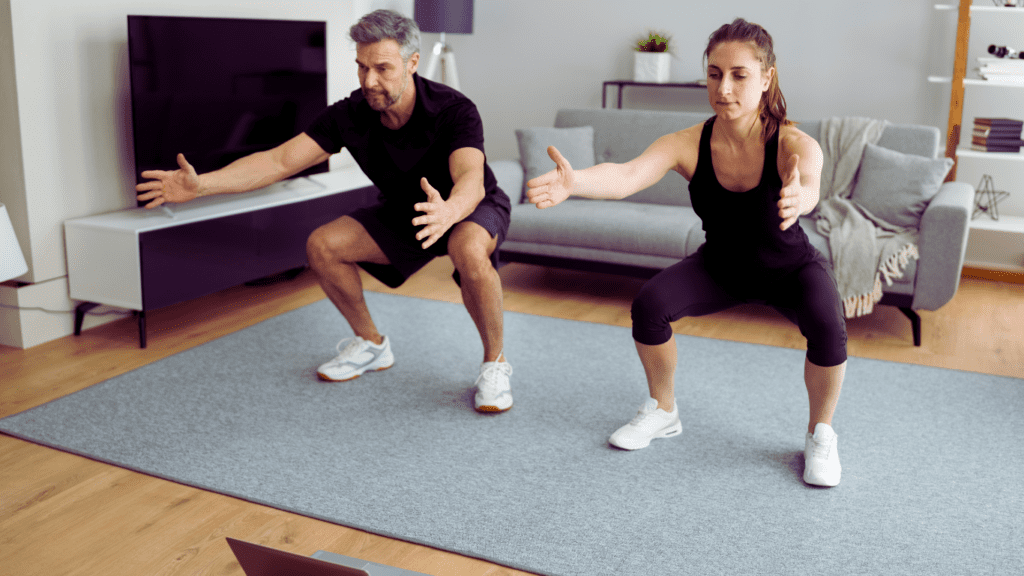
Final Thoughts: Mastering Simple Workout Routines at Home for Lasting Results
Throughout this article, we’ve explored the importance of creating and maintaining effective simple workout routines at home. Whether you’re a beginner or looking to fine-tune your fitness journey, simplicity, consistency, and goal-focused training are the cornerstones for success. Below, we’ll summarize key points that have been emphasized throughout the guide, providing a clear path to building a sustainable and effective home workout routine.
Key Points to Remember
- Simplicity is Key:
- The concept of simple workout routines at home doesn’t require complicated or flashy equipment. Instead, focusing on a few essential exercises such as bodyweight movements, resistance bands, and minimal equipment allows for a practical and effective workout.
- Simple routines eliminate the overwhelming nature of traditional gym workouts, providing a straightforward approach to fitness that is easy to implement consistently.
- Consistency Drives Results:
- Consistency is crucial in any fitness journey. Building a habit of regular workouts ensures steady progress and long-term success.
- By creating a consistent schedule and focusing on gradual progression, your simple workout routines at home become sustainable and effective, even with a busy lifestyle.
- Goal-Focused Training:
- Setting clear fitness goals—whether it’s weight loss, muscle gain, or general fitness—helps shape your simple workout routines at home. Tailoring exercises to match these goals ensures the most effective results.
- Identifying your body type and regularly adapting your routine to fit these goals ensures optimal performance and avoids plateaus.
- Progress Tracking and Adaptation:
- Regularly tracking your progress allows you to see improvements and adjust your workouts as needed.
- Whether through fitness journals, wearable devices, or simple self-assessments, tracking progress keeps workouts relevant and effective.
- Adaptation is important, ensuring your routine evolves with your body’s needs and goals.
Why These Elements Made It into the Article
These points were carefully selected because they represent the foundation of a successful simple workout routine at home. They address common challenges, such as lack of motivation, time constraints, and the need for structured, goal-oriented training. By focusing on simplicity, consistency, and adaptability, readers are empowered to create a sustainable and efficient fitness plan.
Whether you’re just starting your fitness journey or looking for ways to refine your current routine, remember that building a simple workout routine at home is about creating something manageable, sustainable, and results-driven. Stay committed to your goals, embrace the simplicity of bodyweight exercises and minimal equipment, and watch as your fitness levels improve over time.
Take action today by designing your own routine that works with your lifestyle and preferences. Fitness is a personal journey, and with the right approach, your home workouts will become a rewarding and effective part of your daily routine.
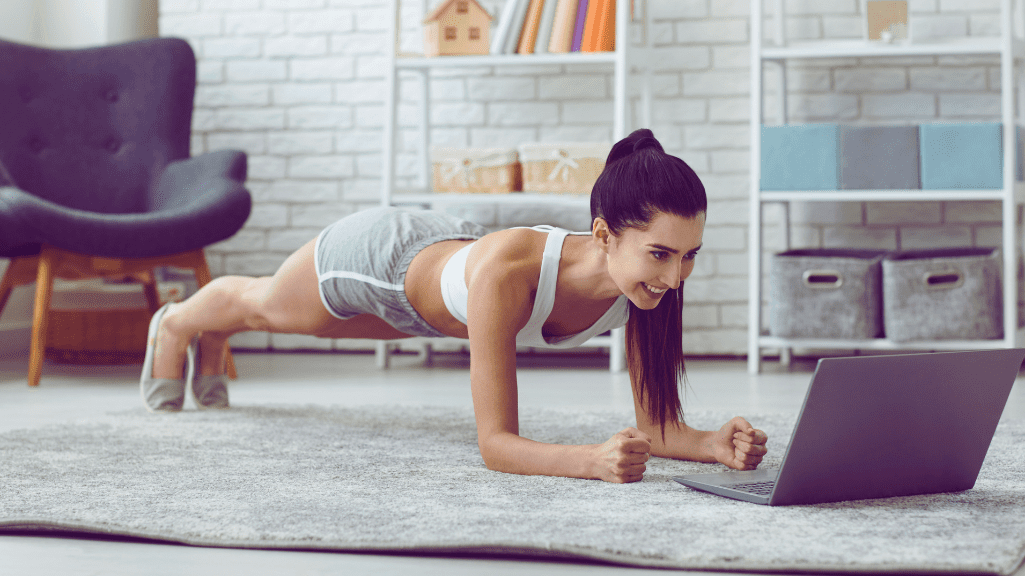
FAQ Section: Simple Workout Routines at Home
1. What are the benefits of simple workout routines at home?
Simple workout routines at home are highly convenient and accessible. They save time, eliminate the need for expensive gym memberships, and can be tailored to suit all fitness levels. By incorporating these routines, you can improve strength, flexibility, and endurance without leaving your home.
2. Do I need equipment for home workouts?
Not necessarily. Many simple workout routines at home rely on bodyweight exercises like squats, push-ups, and planks. However, basic equipment such as a yoga mat, resistance bands, or dumbbells can add variety and intensity to your workouts.
3. How do I stay motivated for home workouts?
Set clear fitness goals and create a dedicated workout space. Joining online fitness communities or scheduling workouts at the same time daily can keep you accountable. Tracking progress and rewarding yourself for milestones can also boost motivation.
4. Can beginners do home workouts effectively?
Absolutely! Simple workout routines at home are perfect for beginners as they allow for gradual progression. Exercises like bodyweight squats, modified push-ups, and beginner yoga poses are great starting points to build strength and confidence.
5. How much time should I dedicate to home workouts?
Start with 20–30 minutes, 3–5 days a week, and adjust based on your fitness level and goals. As you become more comfortable, you can increase the duration or intensity of your workouts to maximize results.
6. What if I have limited space at home?
Limited space isn’t a barrier to effective workouts. Most simple workout routines at home, such as yoga, planks, or jump rope exercises, require only a small area. Focus on exercises that don’t need much movement across the room.
7. Are home workouts effective for weight loss?
Yes, they can be. Incorporating high-intensity interval training (HIIT) or cardio exercises like jumping jacks and burpees into your routine boosts calorie burn. Pair these with a balanced diet for optimal results.
8. How can I prevent injuries while working out at home?
Warm up before starting your routine and cool down afterward to prevent muscle strain. Maintain proper form during exercises and avoid overexertion. If you’re unsure about technique, online tutorials or fitness apps can provide guidance.
9. Can I build muscle with home workouts?
Yes, by focusing on resistance training. Use your body weight for exercises like push-ups and pull-ups or incorporate resistance bands and dumbbells to add load. Progressive overload is key to building strength over time.
10. How do I keep my home workouts varied and engaging?
Switch between different types of exercises, such as strength training, yoga, and cardio. Trying new workout styles or following online fitness classes can keep your simple workout routines at home exciting and challenging.
By consistently practicing these routines, you’ll unlock the full potential of working out from home, transforming both your body and mind.
So, as you step off the mat or finish that last set, hold onto the inspiration and motivation that brought you here. Your home is not just a place to live—it’s a place where you can thrive. The power to create a healthier, more vibrant life is in your hands. Embrace the simplicity of home workouts, and let them guide you to new heights of well-being and self-discovery. Your journey starts now, and every workout is a step towards a brighter, healthier future. Keep moving, stay inspired, and let the transformation unfold.


